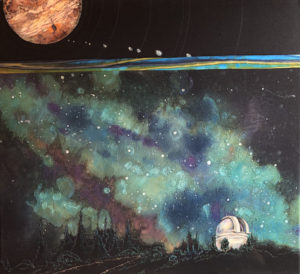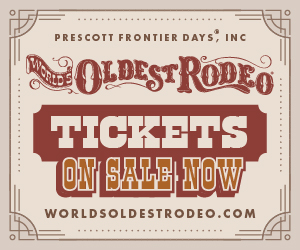Sculptor Joseph McShane finds inspiration everywhere, including in the dark.
In 1984, McShane worked with NASA’s Small Self-Contained Payload Program to conduct a Space Shuttle experiment. Nine glass spheres were placed in the cargo bay of the Challenger. As he explains it, small coils in the smaller bubbles were coated with gold, platinum and other elements, and when, at the direction of the payload computer, the coils heated in the vacuum of space, it caused the material to vaporize and flash out to coat the inside of the spheres and change the clear glass to a wide spectrum of color, “in much the same way that a pair of mirrored sunglasses would be coated in a vacuum chamber,” he said.
McShane could have created the same experiment in his own vacuum chamber without leaving Earth, but the shuttle program provided him with the only way to create art in space, which he was excited about. Unfortunately, the project became more complex than he ever imagined, taking seven years from conception to completion. “After all the years of technical work, at times, I wanted to use a sledgehammer on it,” he joked, recalling his frustration with what seemed like an endless process.
Nonetheless, as the shuttle lifted, a valve on the larger sphere opened and remained open for the seven days of the 3.3-million-mile mission. “Earth’s atmosphere escaped from inside all nine spheres and they became one with the vacuum of outer space,” he said. “The valve closed on the largest sphere before the shuttle re-entered the atmosphere, capturing the vacuum of space and returning it to Earth.”
McShane says the largest sphere is a sculpture to observe and stimulate wonder about the nature and meaning of space, a sphere to touch and know that only an eighth of an inch of glass separates the viewer from space.
McShane, who creates from his Prescott studio, is used to having his artwork receive a lot of attention – it’s often big and interacting with the environment. His sculpture, Spectrum, for example, can be seen at the Arizona Science Center in Phoenix, both inside and outside the building. The huge sculpture, beginning with the light emanating from the sun, transforms visible sunlight into the colors of the spectrum to dance across the Dorrance Planetarium’s exterior walls.
For the spring/summer NightVisions exhibition, McShane served as one of three jurors to help select art pieces from around the world. “It’s an eclectic exhibition, very different in some regards from any show I’ve juried in the past,” he said. “It was enjoyable and brought a certain diversity. One really interesting piece is a video submitted by a park ranger, who is a dark-sky advocate from the Grand Canyon National Park.”
NightVisions, presented by Creative Flagstaff and the Flagstaff Dark Skies Coalition, is free to the public. A donation of $10 is encouraged. For more information, visit https://www.ccaflagstaff.org/nightvisions-2022 or https://FlagstaffDarkSkies.org. FBN
By Bonnie Stevens, FBN







